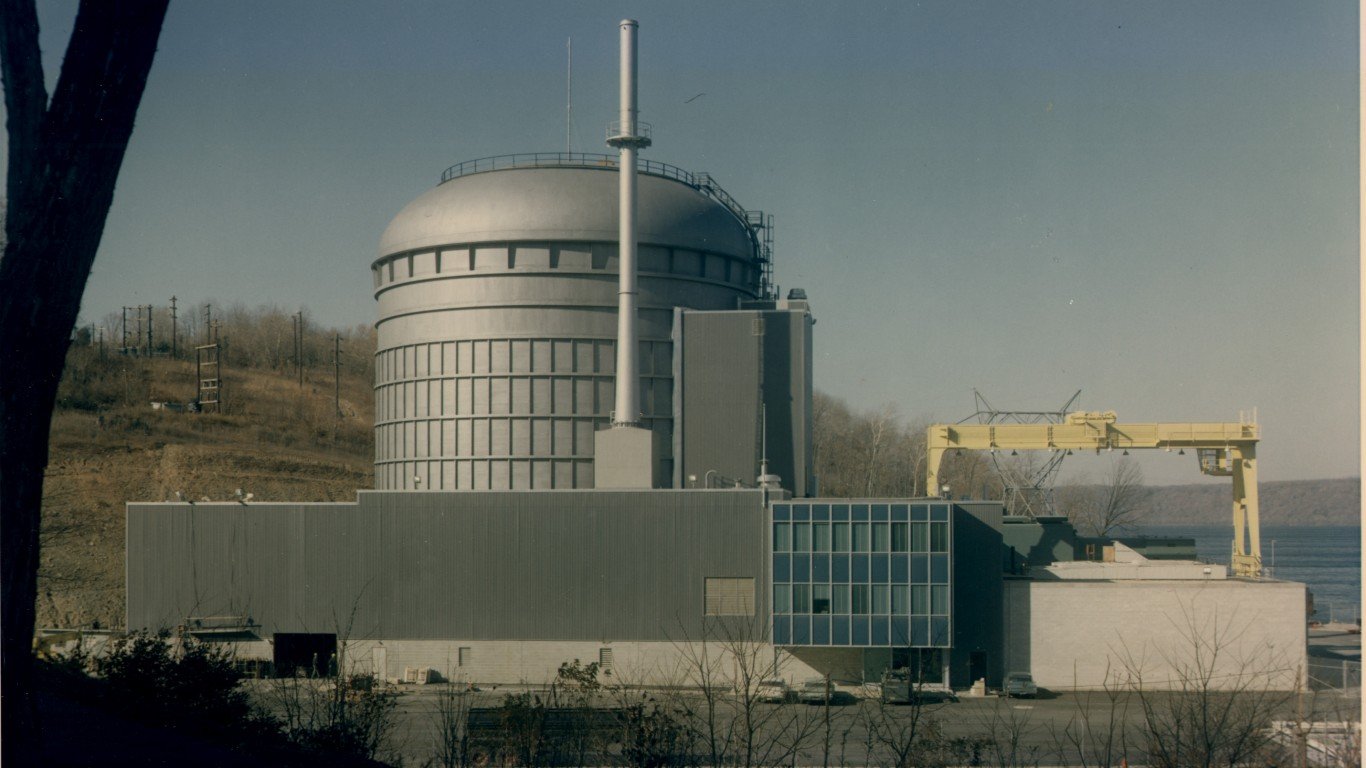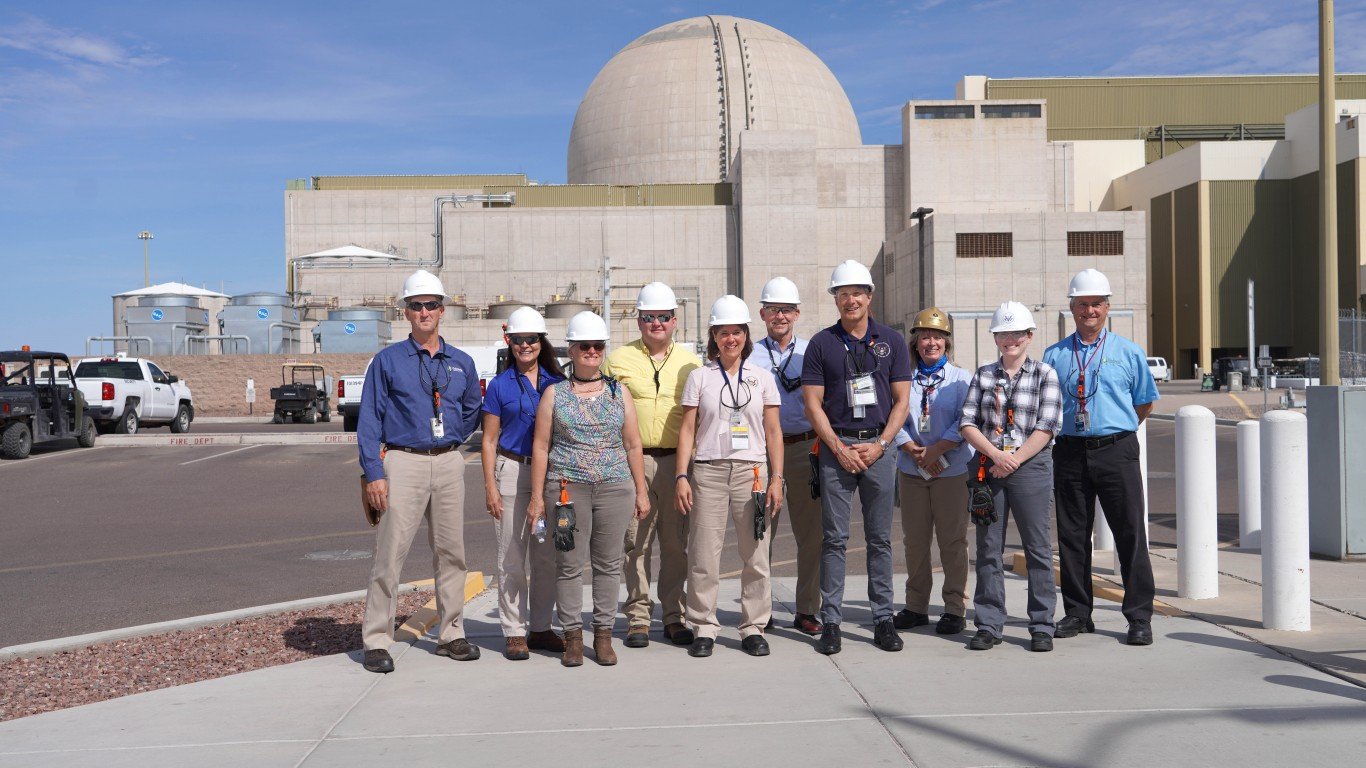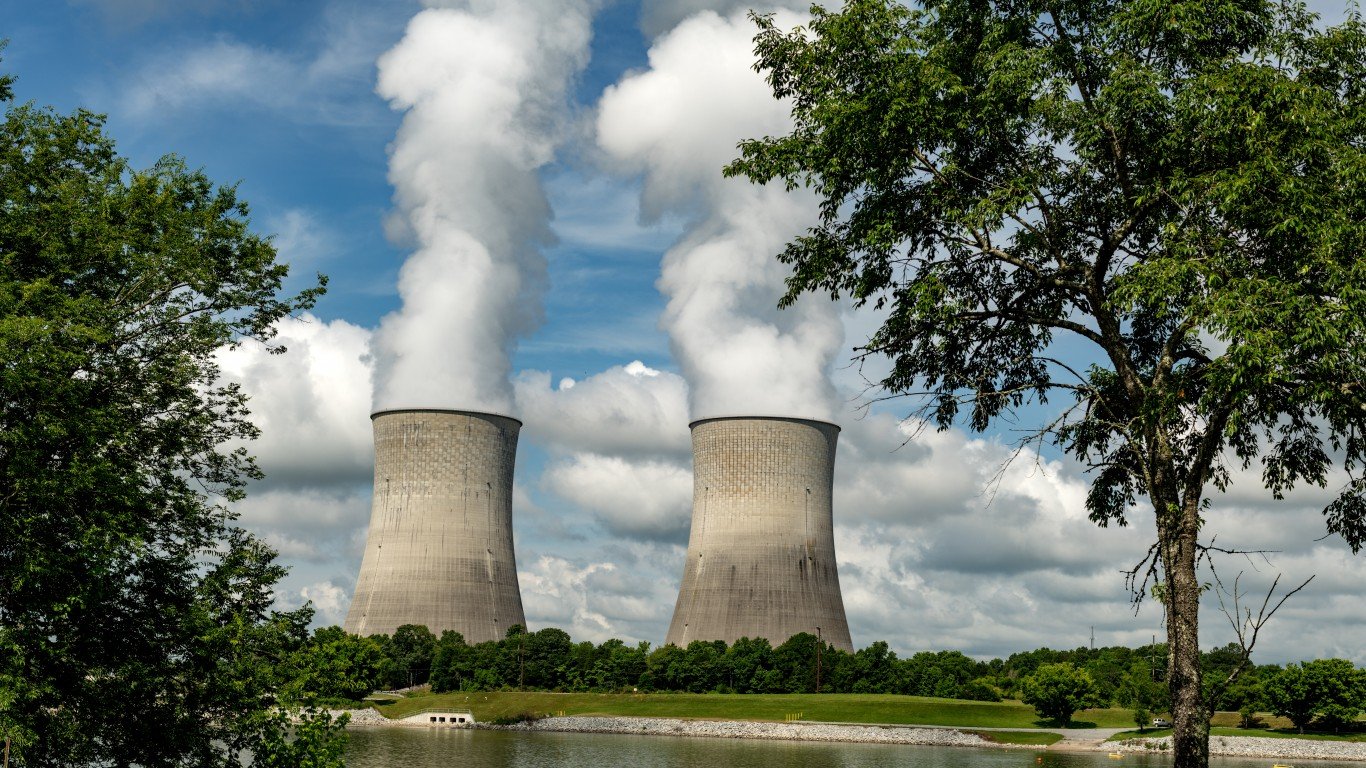

To address the ongoing climate change crisis, the Biden Administration set a target for the U.S. to have a net-zero emissions economy by 2050. Achieving this goal will require a carbon-pollution-free energy sector – and making the transition will not be easy. (Here is a look at the fastest growing and shrinking clean energy jobs).
Energy production is a hot-button political issue in the climate change era, and one of the more controversial topics is nuclear power. Nuclear power plants generate nuclear waste, which cannot be destroyed and requires long-term storage. Additionally, as accidents at Three Mile Island in 1979, the Chernobyl plant in Ukraine in 1986, and the Fukushima plant in Japan in 2011 have demonstrated, malfunctions can be catastrophic.
Still, nuclear plants offer carbon-free energy production, and, unlike some renewable energy sources, like wind and solar, nuclear plants provide reliable output. Nuclear plants are also powerful, and generate electricity about 8,000 times more efficiently than fossil-fuel-powered plants. Currently, there are some 93 active nuclear reactors in the United States, accounting for about 19% of the country’s total energy production. (Whether from nuclear plants or other sources, this is now much renewable energy your state produces.)
Using data from the U.S. Nuclear Regulatory Commission 24/7 Wall St. identified America’s most powerful nuclear power plants. Plants are ranked on the combined maximum output of their reactors.
Every nuclear power plant on this list has an estimated maximum power generation capacity of at least 1.97 gigawatts, and generates that with relatively little space. Wind farms, for example, require 360 times more land area than a nuclear power plant to produce the same amount of electricity.
Click here to see America’s biggest nuclear power plants
Click here to see our detailed methodology
Market forces have caused several large nuclear plants to close operations in recent years. One of the plants on this list, Diablo Canyon in California, is slated for retirement by the end of 2025.
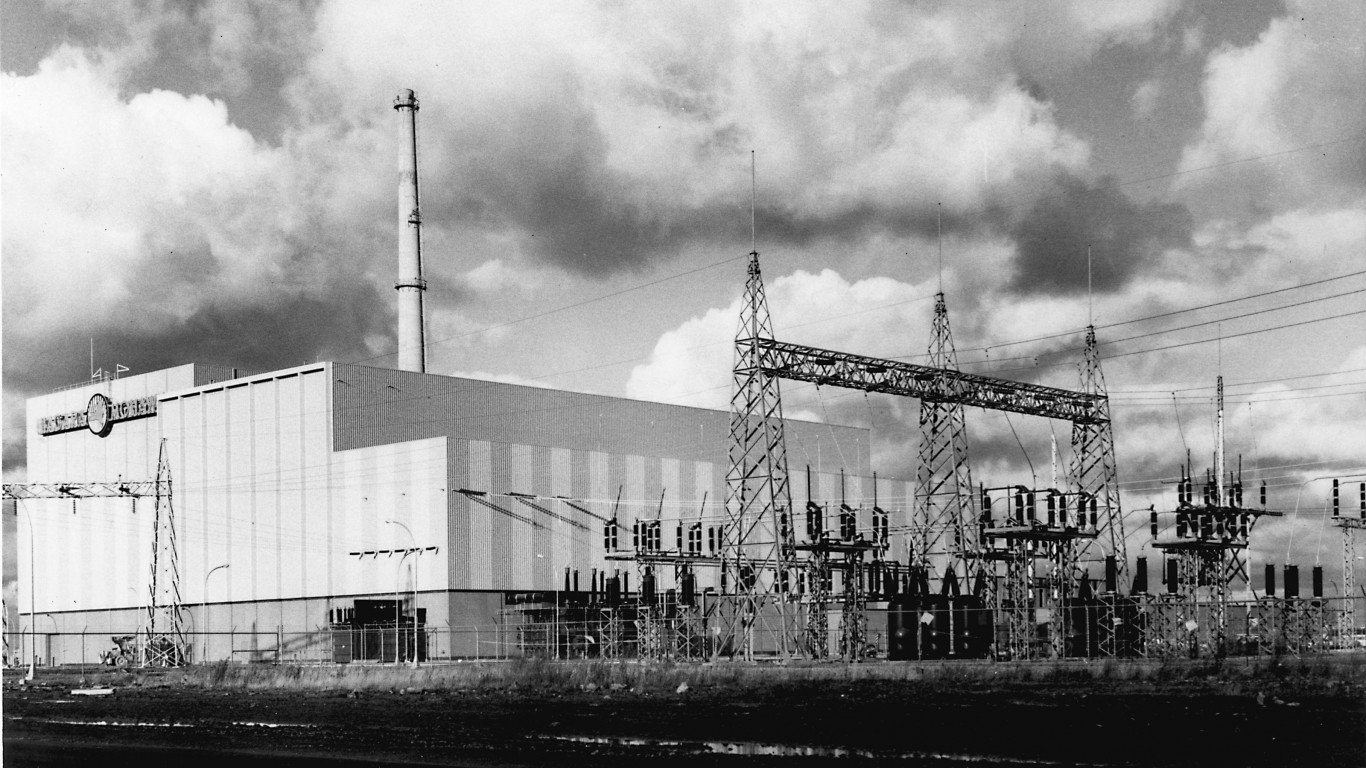
22. Nine Mile Point Nuclear Station
> Electricity production capacity: 1,913 megawatts
> No. of nuclear reactors: 2
> Location: Scriba, NY (6 miles NE of Oswego, NY)
> Start of commercial operations: Dec. 1, 1969
[in-text-ad]
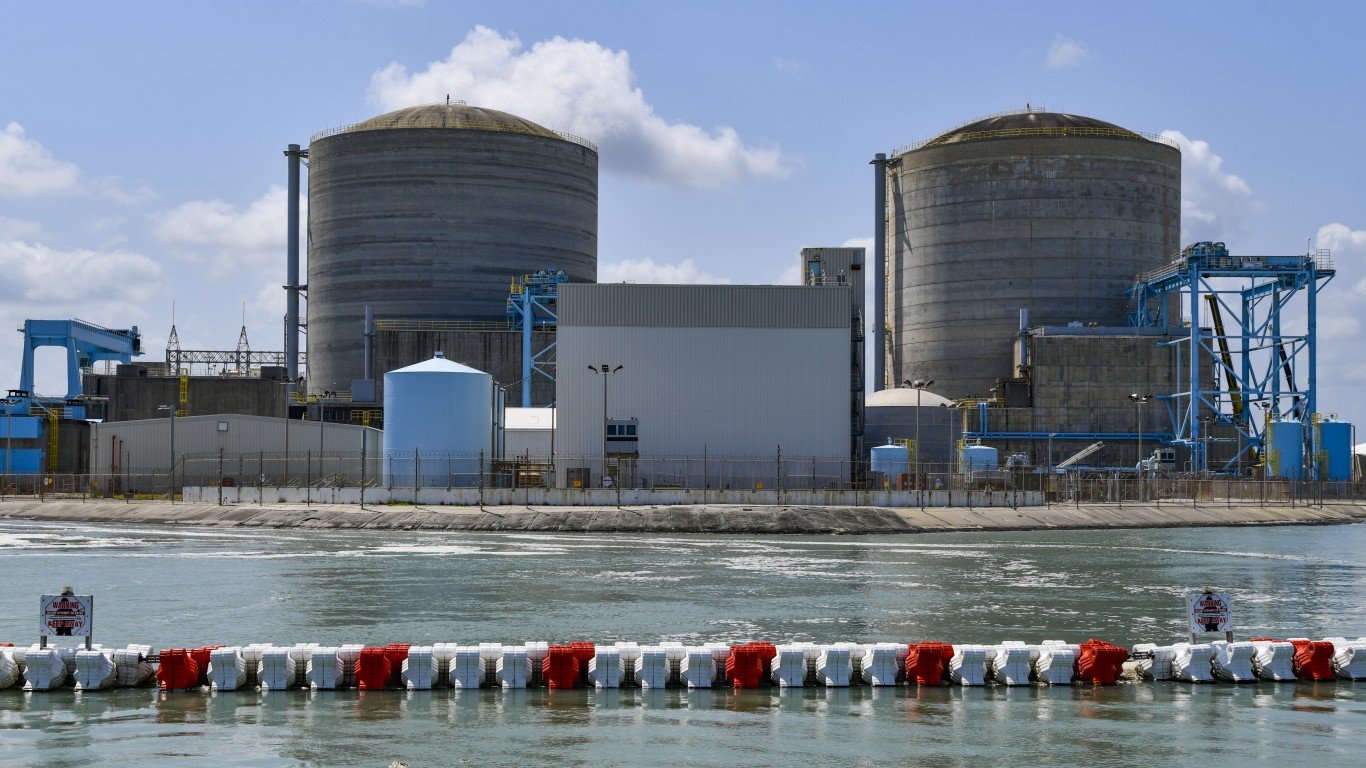
21. St. Lucie Plant
> Electricity production capacity: 1,968 megawatts
> No. of nuclear reactors: 2
> Location: Jensen Beach, FL (10 miles SE of Ft. Pierce, FL)
> Start of commercial operations: Dec. 21, 1976

20. Millstone Power Station
> Electricity production capacity: 2,073 megawatts
> No. of nuclear reactors: 2
> Location: Waterford, CT (3 miles WSW of New London, CT)
> Start of commercial operations: Dec. 26, 1975
19. Donald C. Cook Nuclear Plant
> Electricity production capacity: 2,177 megawatts
> No. of nuclear reactors: 2
> Location: Bridgman, MI (13 miles S of Benton Harbor, MI)
> Start of commercial operations: Aug. 28, 1975
[in-text-ad-2]
18. Diablo Canyon Nuclear Power Plant
> Electricity production capacity: 2,240 megawatts
> No. of nuclear reactors: 2
> Location: Avila Beach, CA (12 miles WSW of San Luis Obispo, CA)
> Start of commercial operations: May 7, 1985

17. Limerick Generating Station
> Electricity production capacity: 2,242 megawatts
> No. of nuclear reactors: 2
> Location: Limerick, PA (21 miles NW of Philadelphia, PA)
> Start of commercial operations: Feb. 1, 1986
[in-text-ad]

16. Watts Bar Nuclear Plant
> Electricity production capacity: 2,245 megawatts
> No. of nuclear reactors: 2
> Location: Spring City, TN (60 miles SW of Knoxville, TN)
> Start of commercial operations: May 27, 1996
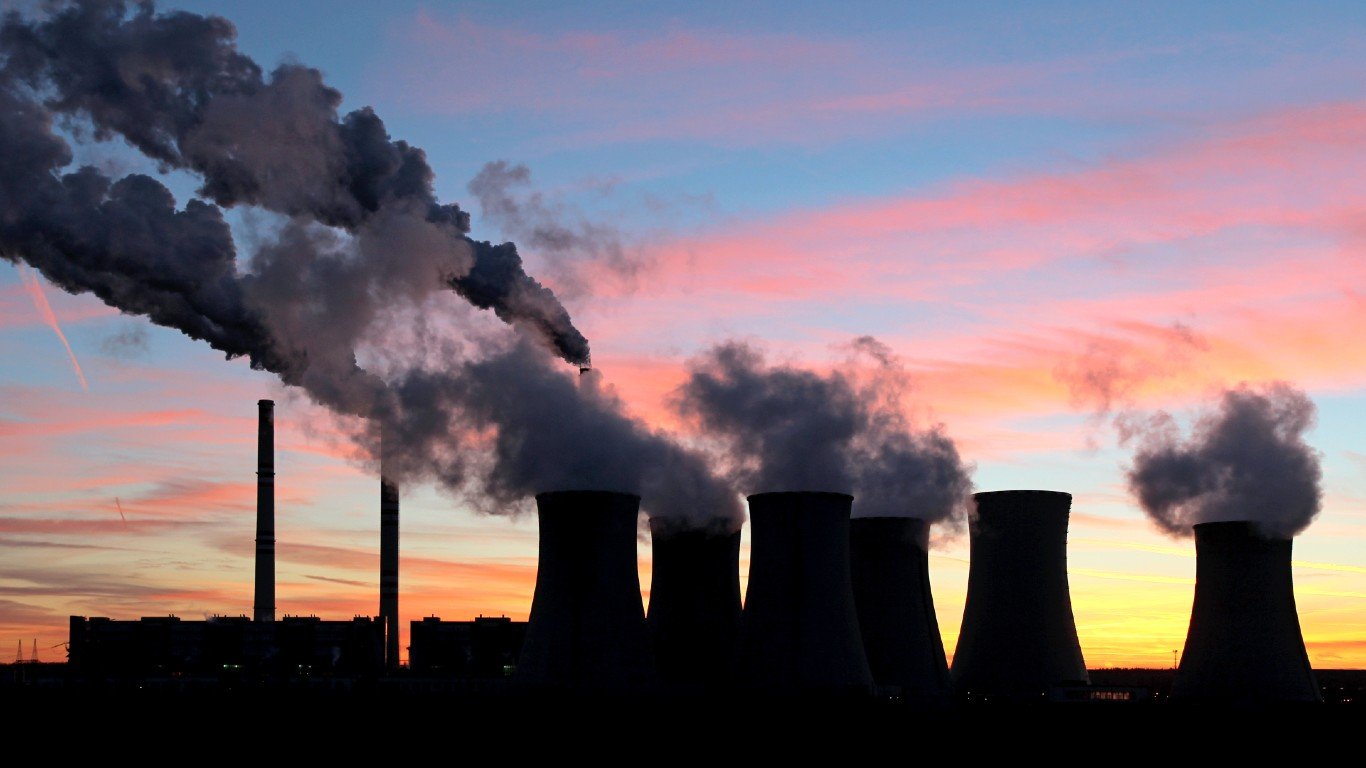
15. LaSalle County Station
> Electricity production capacity: 2,265 megawatts
> No. of nuclear reactors: 2
> Location: Marseilles, IL (11 miles SE of Ottawa, IL)
> Start of commercial operations: Jan. 1, 1984
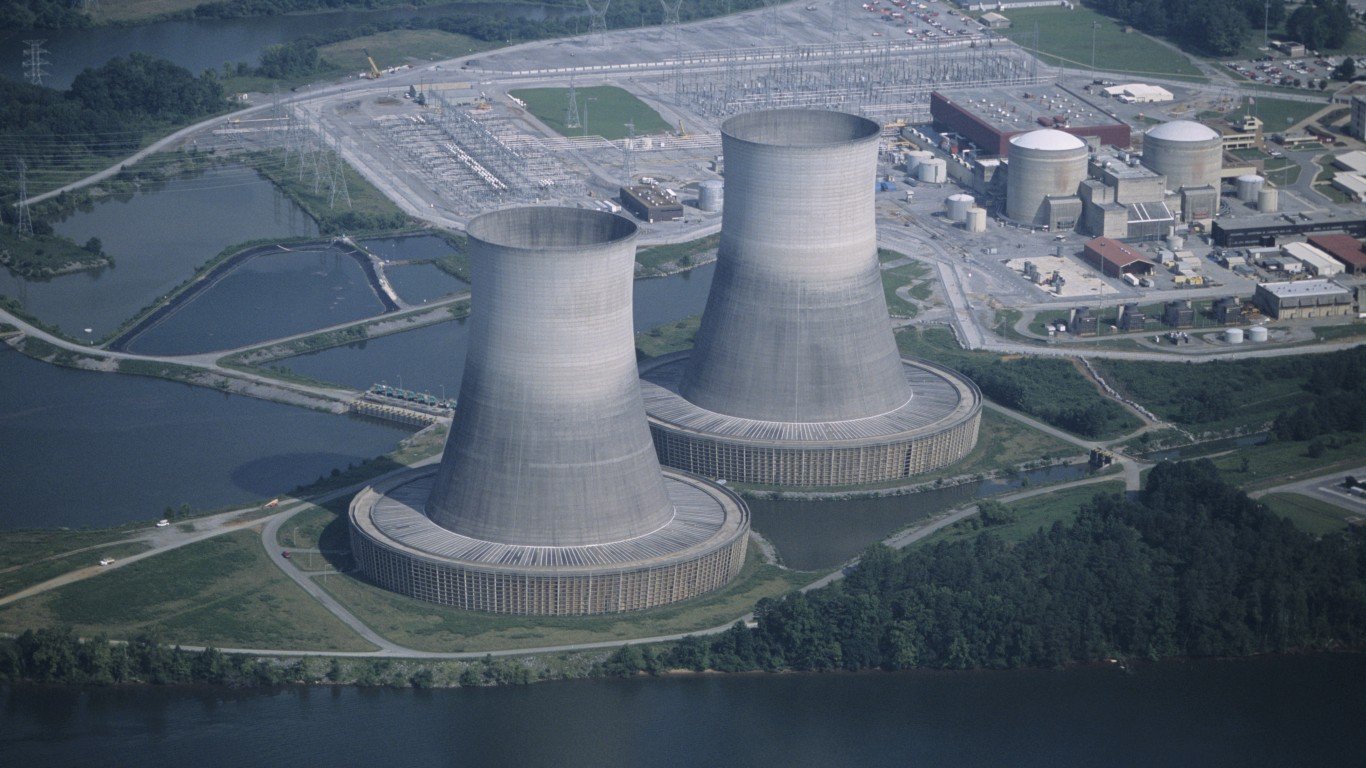
14. Sequoyah Nuclear Plant
> Electricity production capacity: 2,278 megawatts
> No. of nuclear reactors: 2
> Location: Soddy-Daisy, TN (16 miles NE of Chattanooga, TN)
> Start of commercial operations: July 1, 1981
[in-text-ad-2]
13. Salem Nuclear Generating Station
> Electricity production capacity: 2,295 megawatts
> No. of nuclear reactors: 2
> Location: Hancocks Bridge, NJ (18 miles SE of Wilmington, DE)
> Start of commercial operations: June 30, 1977
12. Byron Station
> Electricity production capacity: 2,300 megawatts
> No. of nuclear reactors: 2
> Location: Byron, Il (17 miles SW of Rockford, IL)
> Start of commercial operations: Sept. 16, 1985
[in-text-ad]
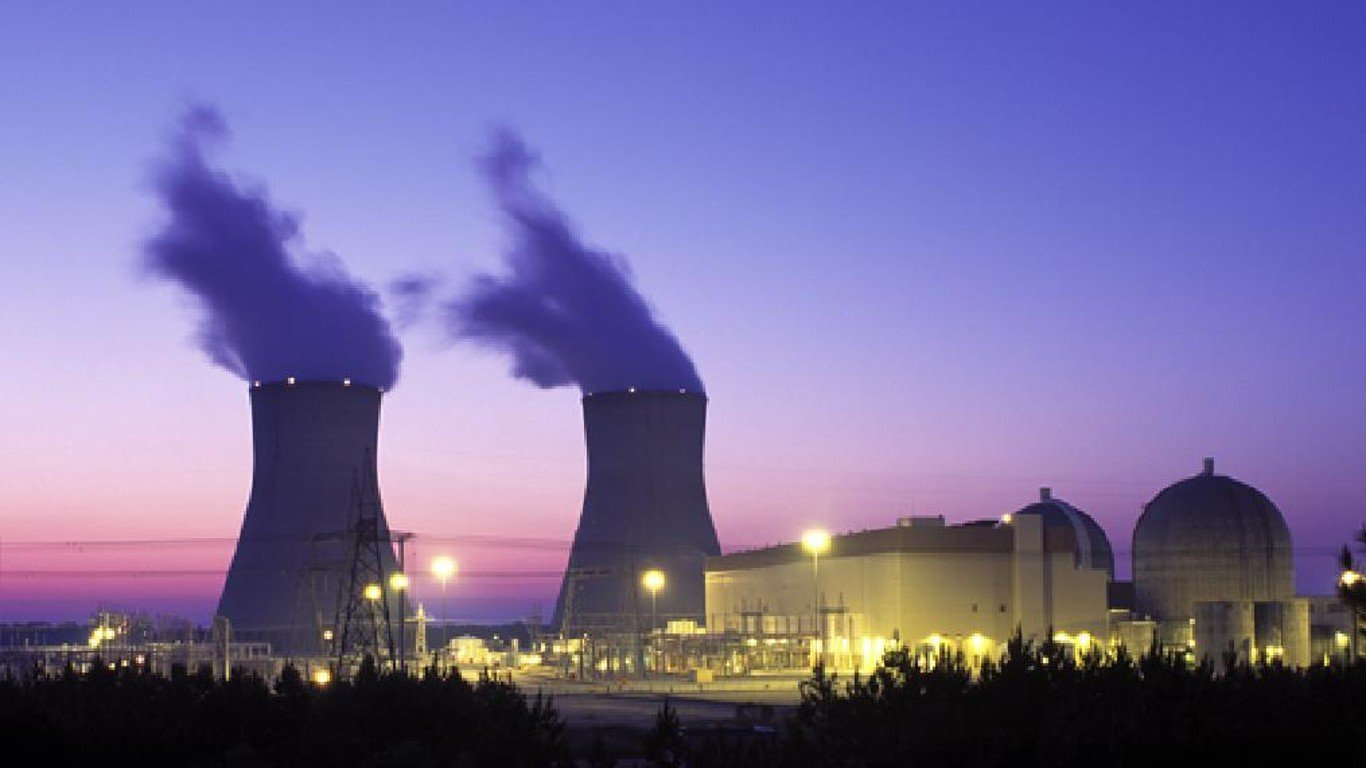
11. Vogtle Electric Generating Plant
> Electricity production capacity: 2,302 megawatts
> No. of nuclear reactors: 2
> Location: Waynesboro, GA (26 miles SE of Augusta, GA)
> Start of commercial operations: June 1, 1987
10. Catawba Nuclear Station
> Electricity production capacity: 2,310 megawatts
> No. of nuclear reactors: 2
> Location: York, SC (18 miles SW of Charlotte, NC)
> Start of commercial operations: June 29, 1985
9. McGuire Nuclear Station
> Electricity production capacity: 2,316 megawatts
> No. of nuclear reactors: 2
> Location: Huntersville, NC (17 miles N of Charlotte, NC)
> Start of commercial operations: Dec. 1, 1981
[in-text-ad-2]

8. Braidwood Station
> Electricity production capacity: 2,337 megawatts
> No. of nuclear reactors: 2
> Location: Braceville, IL (20 miles SSW of Joliet, IL)
> Start of commercial operations: July 29, 1988
7. Comanche Peak Nuclear Power Plant
> Electricity production capacity: 2,400 megawatts
> No. of nuclear reactors: 2
> Location: Glen Rose, TX (40 miles SW of Fort Worth, TX)
> Start of commercial operations: Aug. 13, 1990
[in-text-ad]
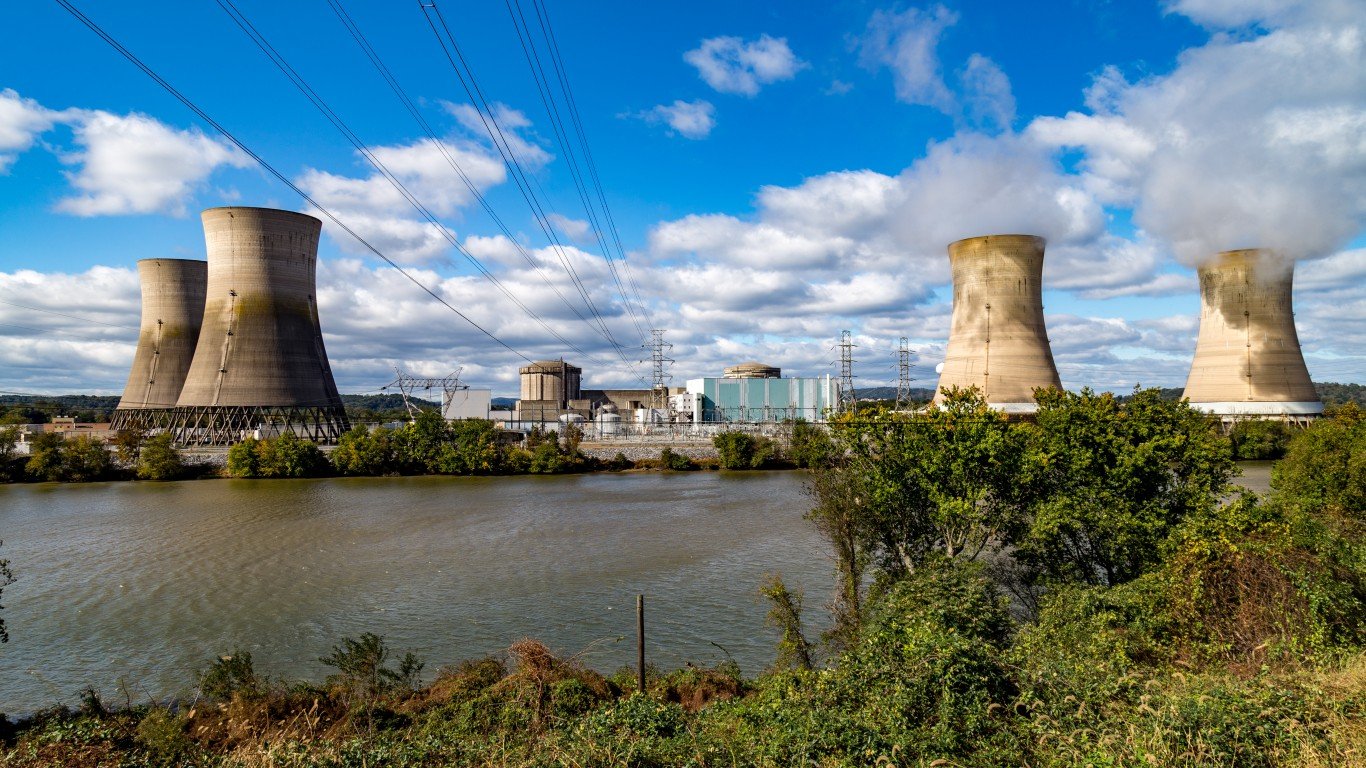
6. Susquehanna Steam Electric Station
> Electricity production capacity: 2,494 megawatts
> No. of nuclear reactors: 2
> Location: Salem Township, Luzerne Co., PA (70 miles NE of Harrisburg, PA)
> Start of commercial operations: June 8, 1983
5. Peach Bottom Atomic Power Station
> Electricity production capacity: 2,550 megawatts
> No. of nuclear reactors: 2
> Location: Delta, PA (18 miles S of Lancaster, PA)
> Start of commercial operations: July 5, 1974
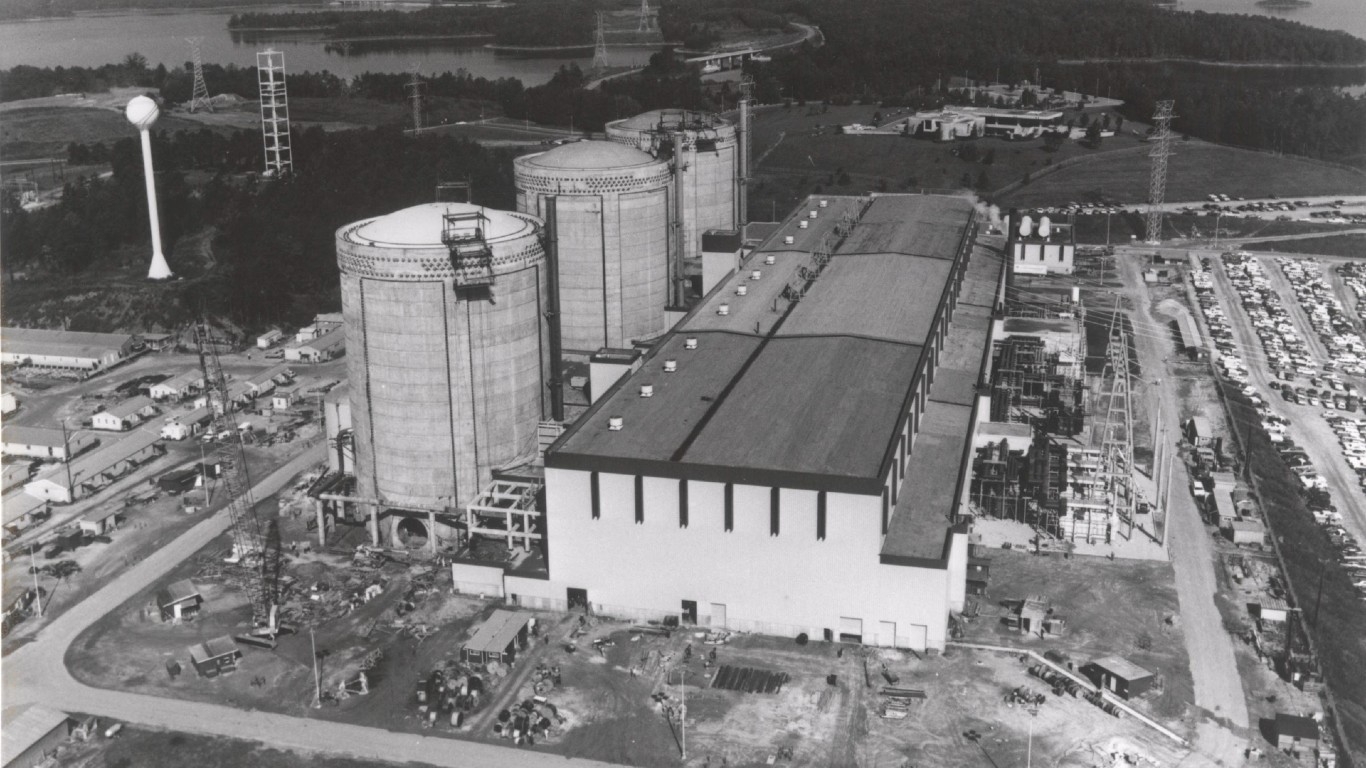
4. Oconee Nuclear Station
> Electricity production capacity: 2,554 megawatts
> No. of nuclear reactors: 3
> Location: Seneca, SC (30 miles W of Greenville, SC)
> Start of commercial operations: July 15, 1973
[in-text-ad-2]
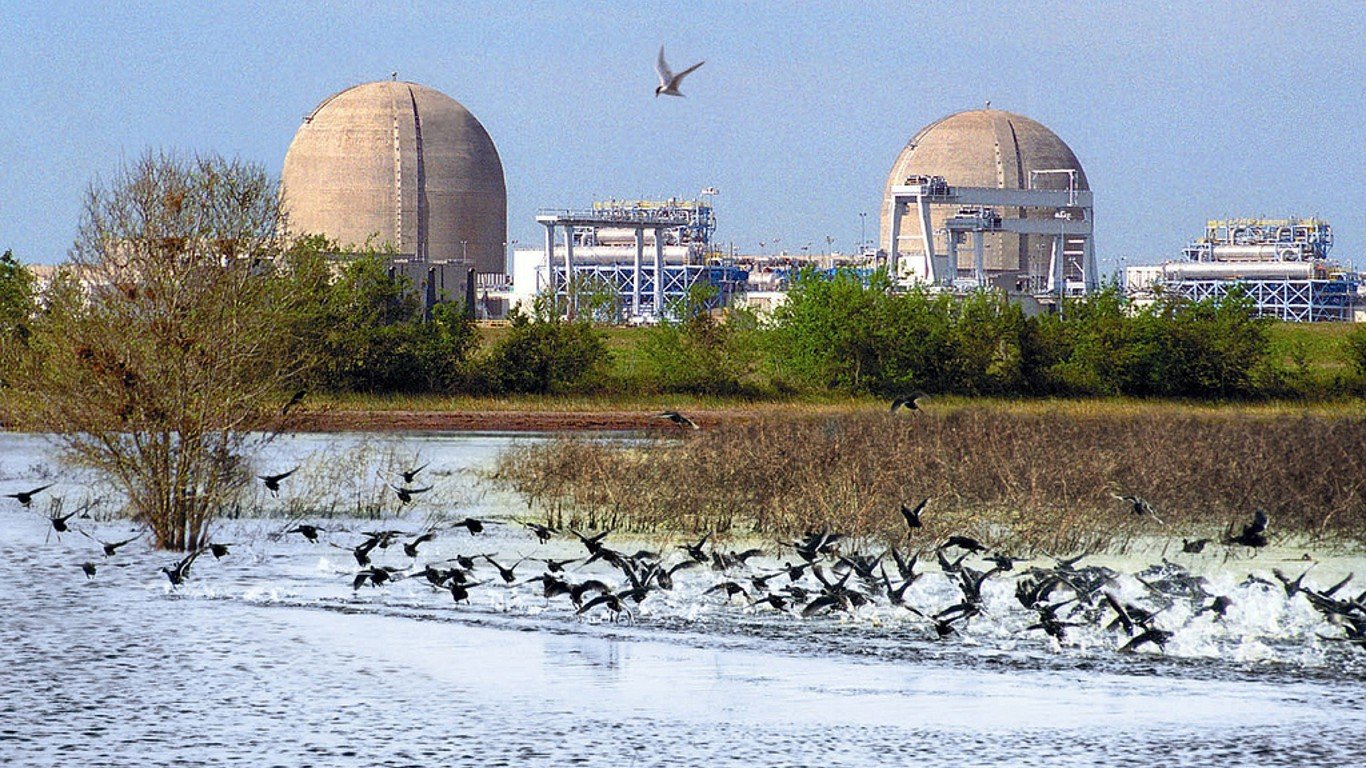
3. South Texas Project
> Electricity production capacity: 2,560 megawatts
> No. of nuclear reactors: 2
> Location: Bay City, TX (90 miles SW of Houston, TX)
> Start of commercial operations: Aug. 25, 1988

2. Browns Ferry Nuclear Plant
> Electricity production capacity: 3,775 megawatts
> No. of nuclear reactors: 3
> Location: Limestone County, AL (10 miles S of Athens, AL, and 32 miles W of Huntsville, AL)
> Start of commercial operations: Aug. 1, 1974
[in-text-ad]
1. Palo Verde Nuclear Generating Station
> Electricity production capacity: 3,937 megawatts
> No. of nuclear reactors: 3
> Location: Wintersburg, AZ (50 miles W of Phoenix, AZ)
> Start of commercial operations: Jan. 28, 1986
Methodology
To identify America’s most powerful nuclear power plants, 24/7 Wall St. looked at the combined capacity of electricity production in megawatts (MWe) produced by nuclear power plants across the country according to the U.S. Nuclear Regulatory Commission. Megawatt energy in electricity, the location of each nuclear power plant, and the number of reactors that contribute to the final megawatt output come from the NRC. All data is current as of 2021.
Sponsored: Find a Qualified Financial Advisor
Finding a qualified financial advisor doesn’t have to be hard. SmartAsset’s free tool matches you with up to 3 fiduciary financial advisors in your area in 5 minutes. Each advisor has been vetted by SmartAsset and is held to a fiduciary standard to act in your best interests. If you’re ready to be matched with local advisors that can help you achieve your financial goals, get started now.
Thank you for reading! Have some feedback for us?
Contact the 24/7 Wall St. editorial team.
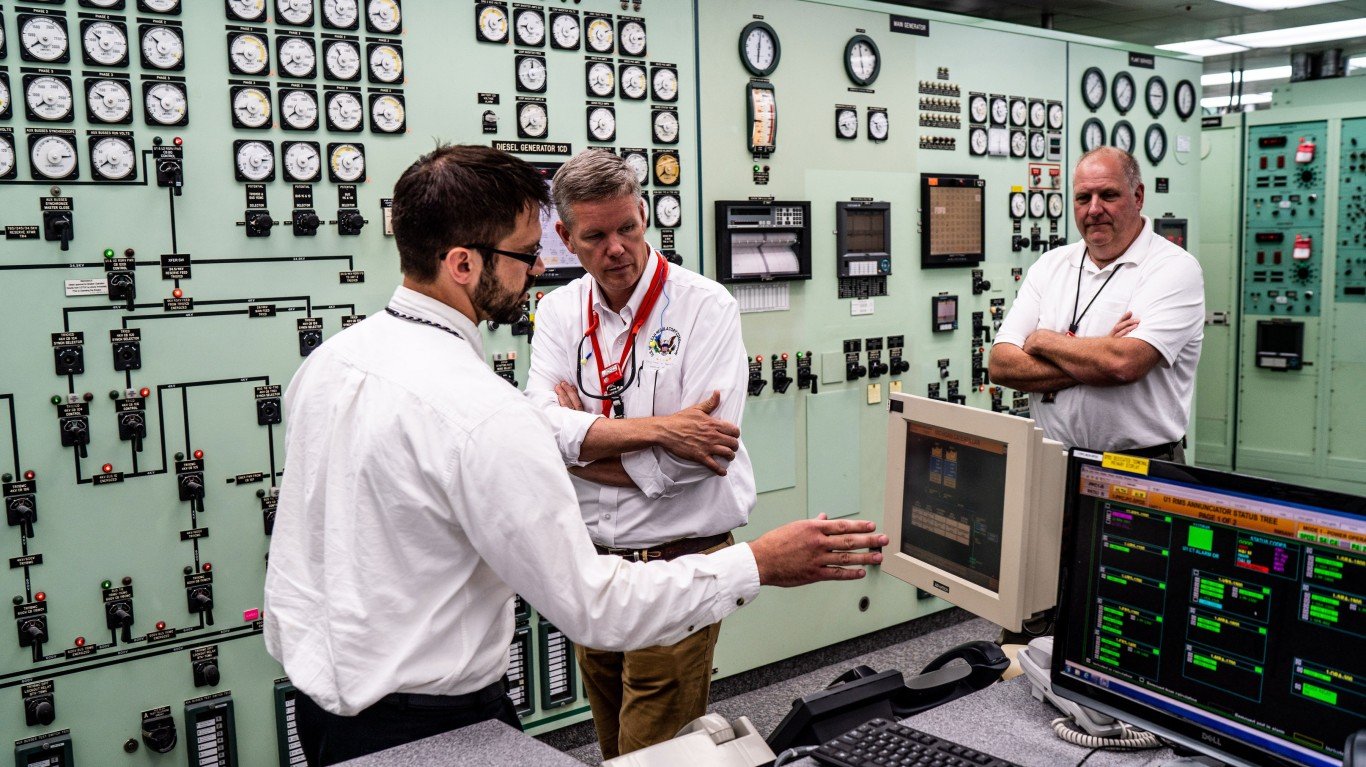
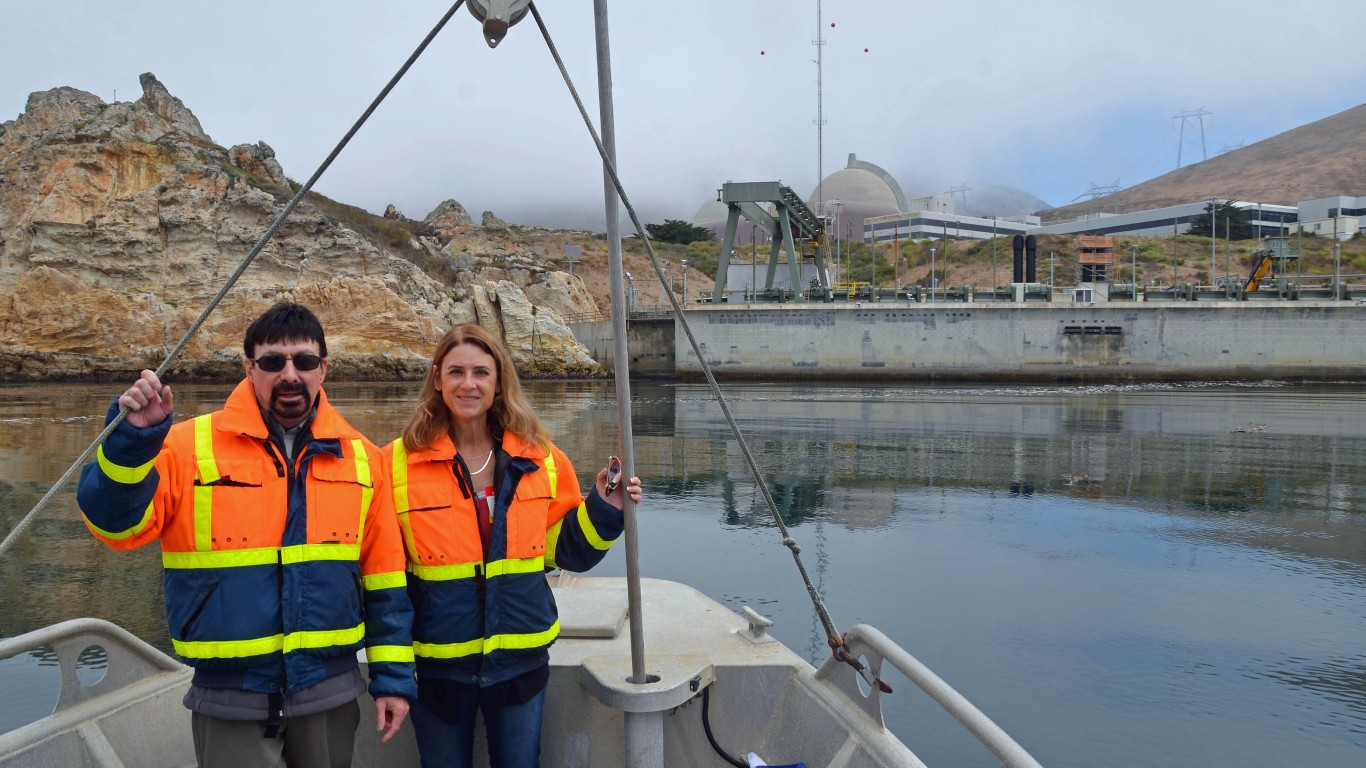
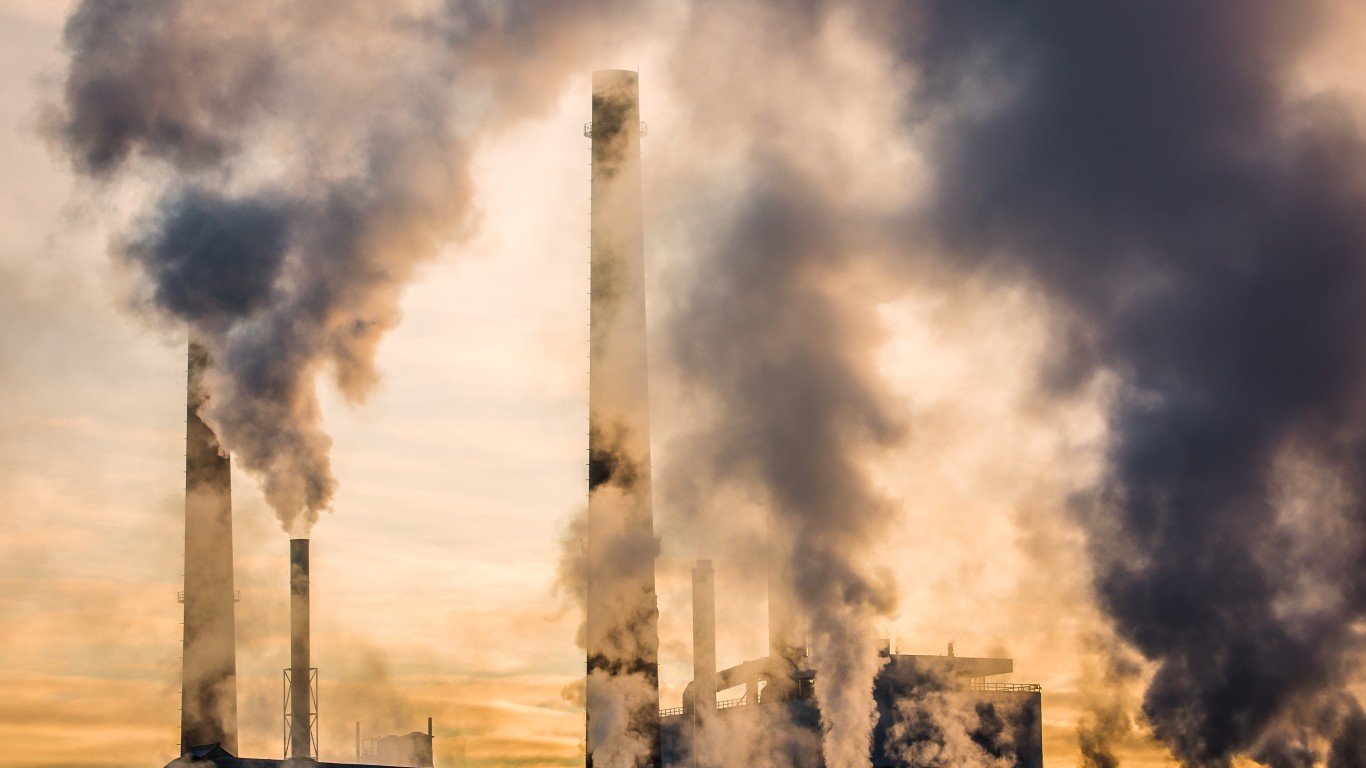 24/7 Wall St.
24/7 Wall St.
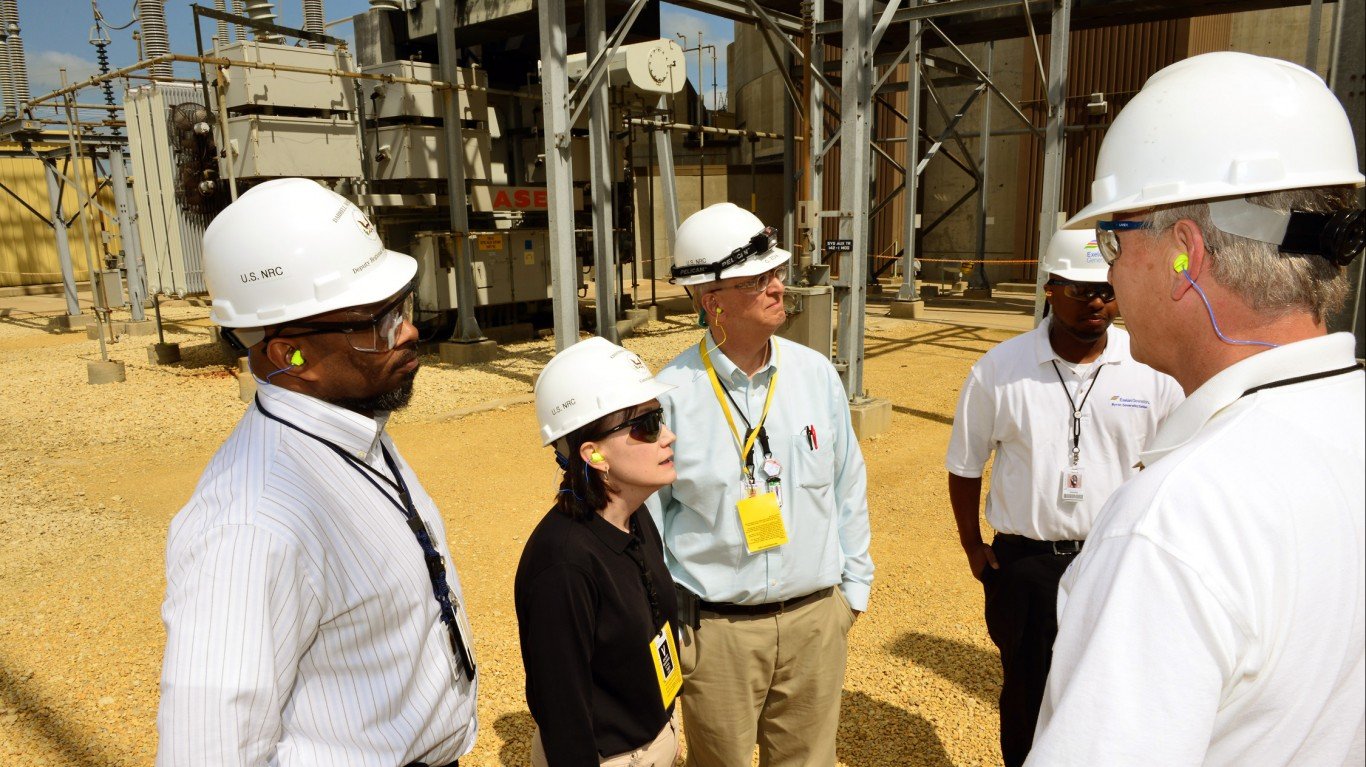
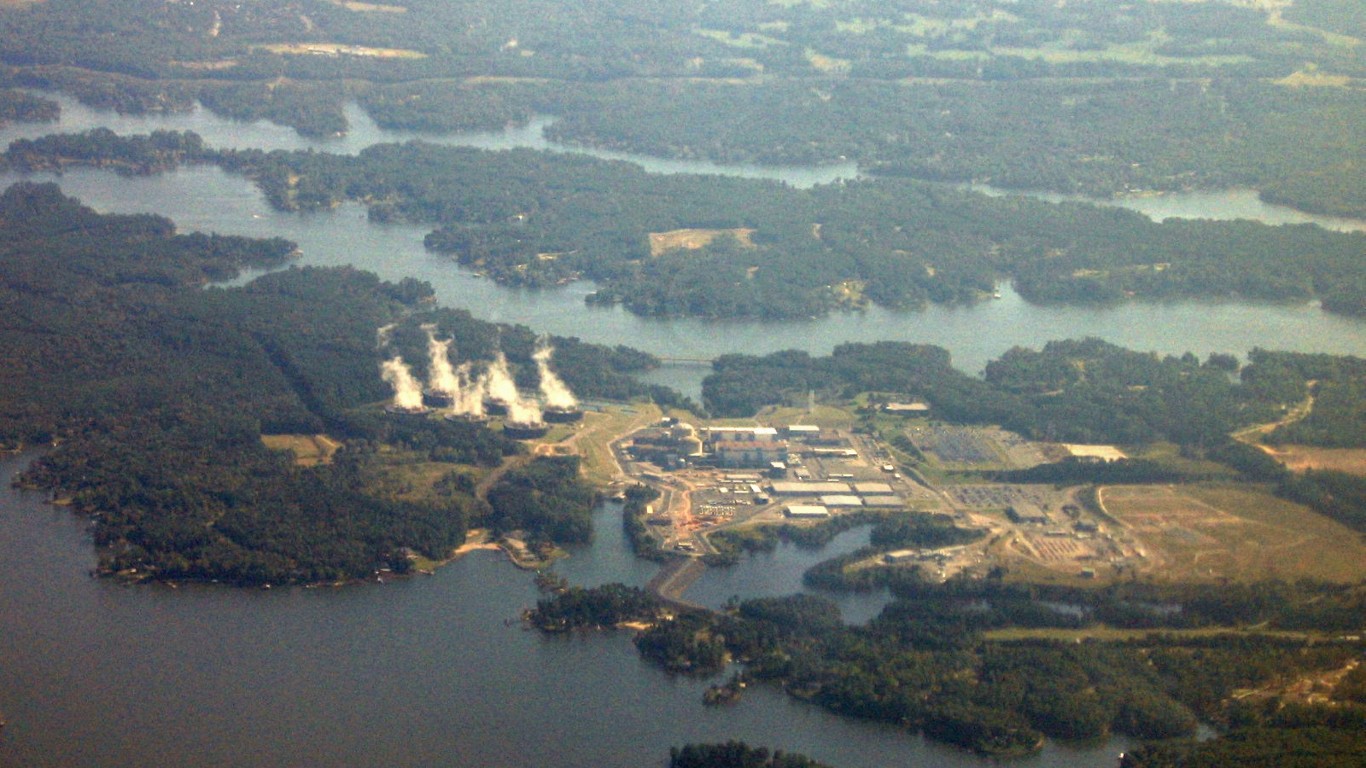
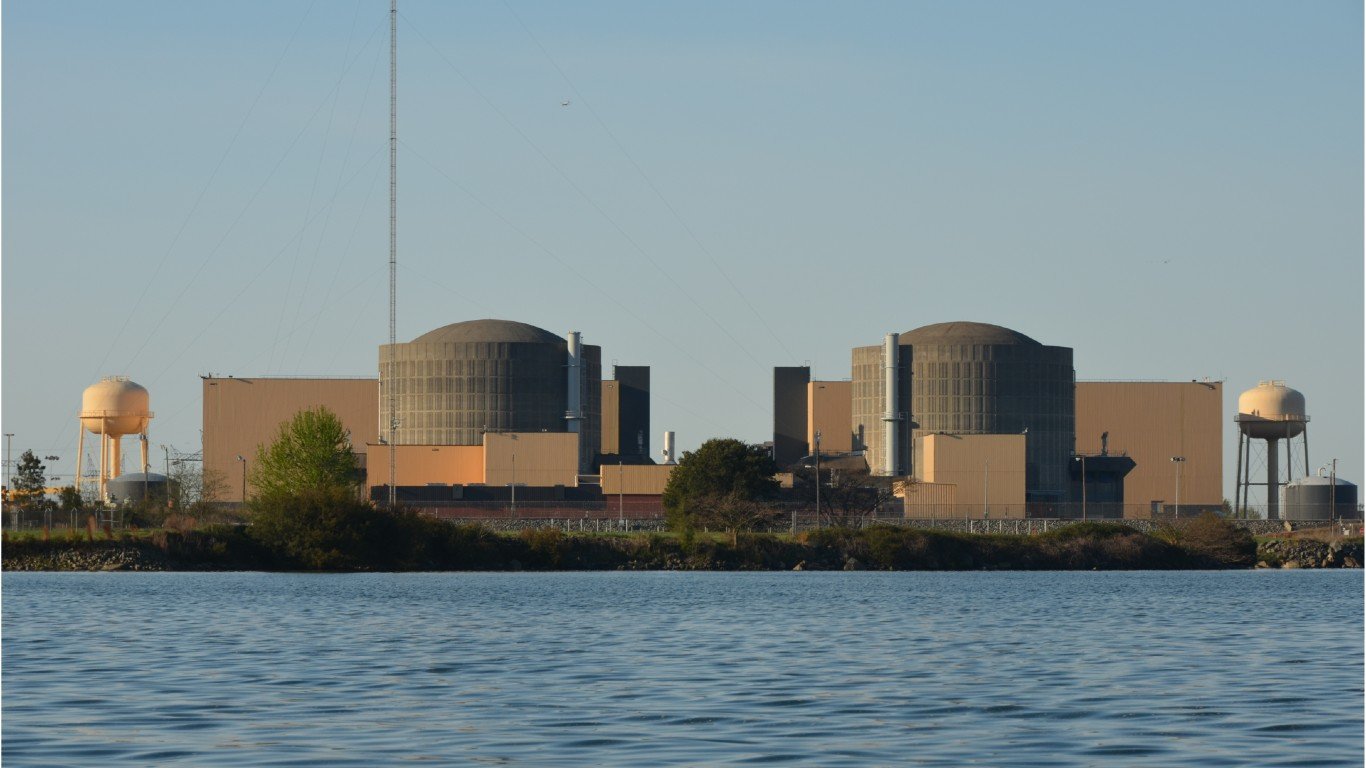
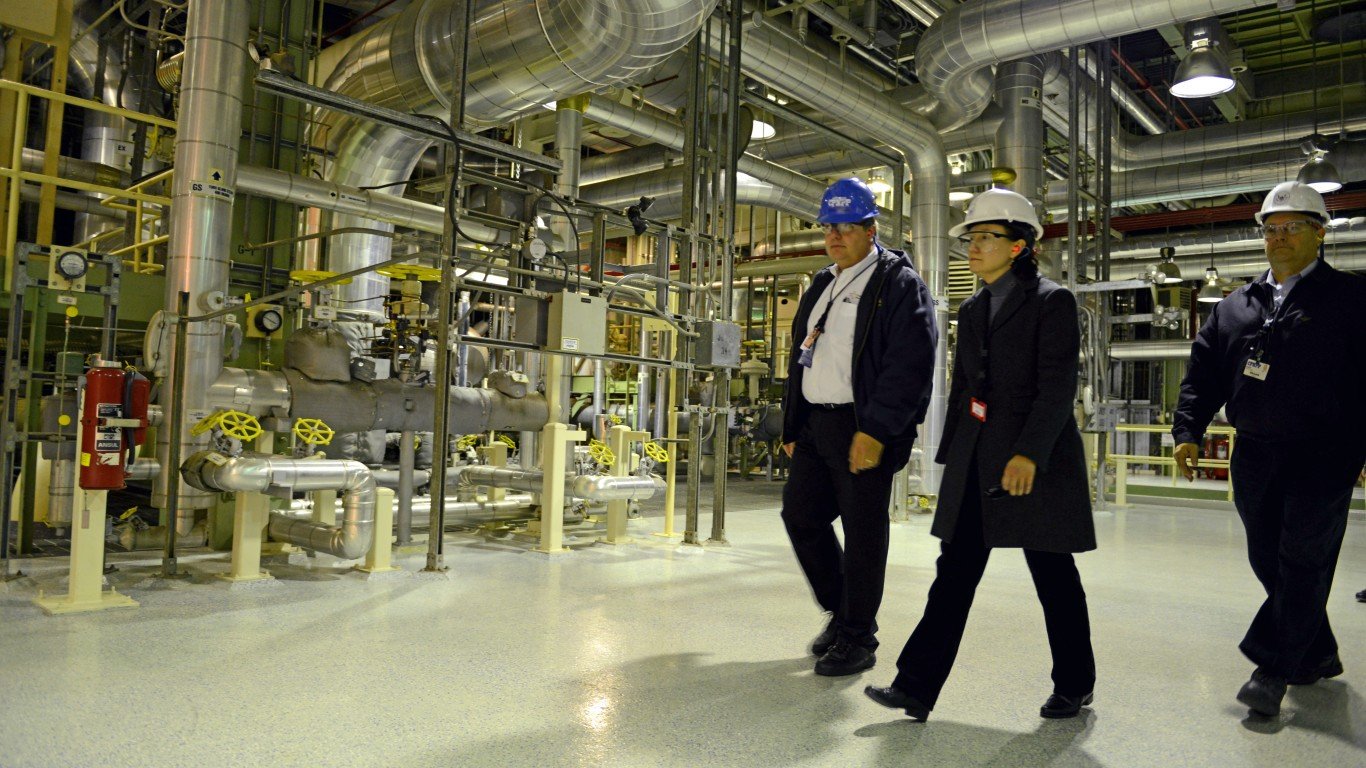
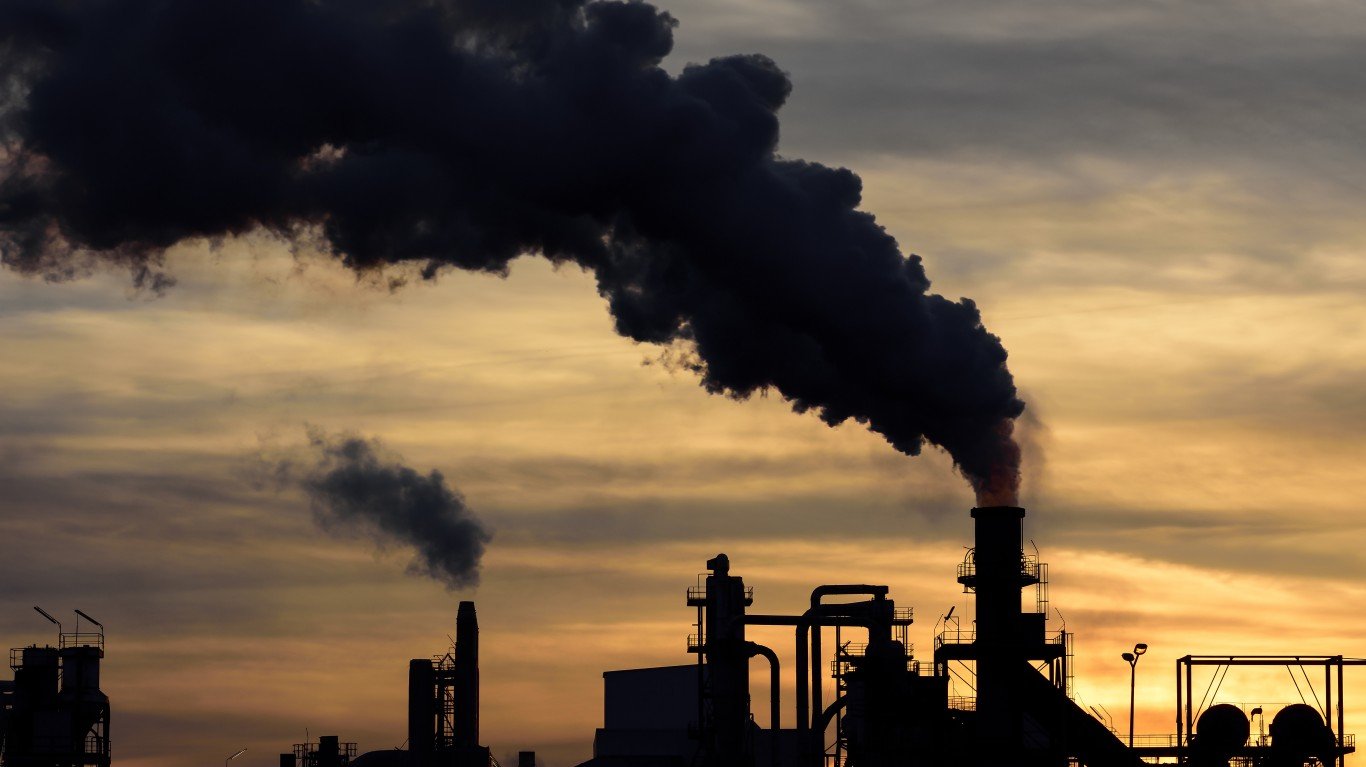 24/7 Wall St.
24/7 Wall St.